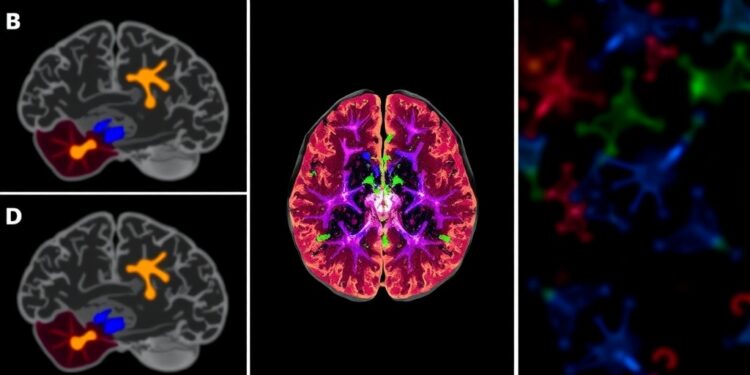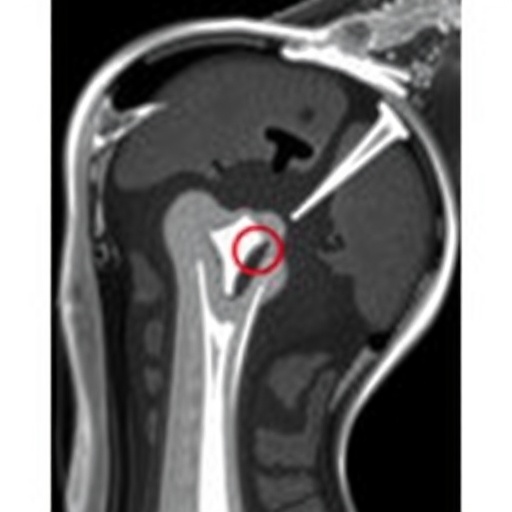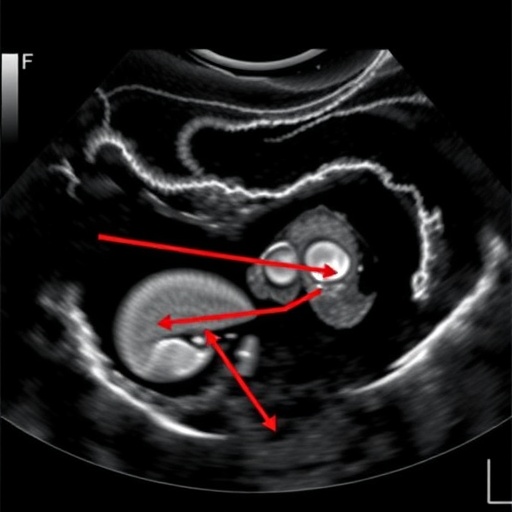Recent research from the esteemed Johns Hopkins Kimmel Cancer Center has uncovered critical insights into glioblastomas, some of the most aggressive and treatment-resistant brain tumors. A striking revelation of this study is the identification of a particular subset of immune cells that significantly contributes to the growth and resilience of these tumors. This research utilized advanced technologies, including spatial genomics and single-cell RNA sequencing, to delineate the intricate interactions between immune cells and glioblastoma stem cells. Such findings propel our understanding of the tumor microenvironment and its implications for future therapeutic strategies.
Glioblastomas are classified as grade 4 tumors and exhibit a sinister ability to evade traditional therapeutic approaches, especially those targeting the immune system. The researchers embarked on an investigation into the underpinnings of glioblastomas at both the cellular and molecular levels, focusing specifically on the tumor stem cells which are believed to be the engines driving tumor growth. Tumor stem cells represent a mere fraction of the total tumor mass yet are pivotal in sustaining tumor dynamics and heterogeneity. Their resilient nature embodies the aggressive characteristics of glioblastomas, prompting researchers to explore their interactions with surrounding immune cells.
The pivotal aspect of this study was the discovery of myeloid-derived suppressor cells (MDSCs), a type of immunosuppressive cell that plays a crucial role in tumor progression. MDSCs were shown to co-localize with glioblastoma stem cells in a specific region of the tumor previously described as the pseudopalisading area. This intimate association between MDSCs and glioblastoma cells forms a symbiotic relationship, where both cell types contribute to an environment that fosters tumor aggressiveness. Understanding this connection between tumor stem cells and MDSCs unveils potential avenues for intervention in glioblastoma treatment.
Utilizing cutting-edge spatial transcriptomics, the researchers were able to visualize the spatial distribution of gene expression profiles amongst over 750,000 immune cells and their tumor counterparts. This analysis not only confirmed the co-localization of MDSCs with glioblastoma stem cells but also highlighted the complex communication pathways that exist between these cells. The tumor stem cells were shown to secrete various chemokines and growth factors that attracted and activated MDSCs, thereby enhancing the tumor’s growth.
Importantly, the findings indicated that tumor stem cells actively produce interleukin-6 (IL-6) and interleukin-8 (IL-8), both of which serve as attractants for MDSCs. The presence of these interleukins is detrimental, as they not only draw in MDSCs but also play a role in their activation. MDSCs, in return, secrete fibroblast growth factor 11 (FGF11), identified as a novel growth factor in the context of glioblastomas. This reciprocal nurturing between the two cell populations amplifies tumor growth, rendering glioblastoma even more formidable.
The study further expanded its scope by comparing glioblastomas harboring IDH1 mutations, which are known to exhibit significantly reduced aggressiveness, with their wild-type counterparts. Remarkably, the tumors with IDH1 mutations had a markedly lower presence of both glioblastoma stem cells and MDSCs. Utilizing data from the National Cancer Institute’s Cancer Genome Atlas, researchers established a correlation between the level of MDSC infiltration in tumors and patient survival. This connection underscores the importance of these immune cells in dictating tumor behavior and patient outcomes.
The implications of these findings are profound, as they suggest that targeting both the glioblastoma stem cells and their associated MDSCs could offer a new paradigm for treating this devastating disease. Researcher Drew Pardoll articulated hope that uncovering these cellular interactions can lead to the identification of novel therapeutic targets, potentially culminating in more effective treatment strategies for patients suffering from glioblastomas.
Efforts towards developing targeted therapies are already underway, with researchers investigating bispecific antibodies that can inhibit the signaling pathways of IL-6 and IL-8. Such interventions could disrupt the current dynamic between glioblastoma stem cells and MDSCs, effectively extinguishing the support system that enables these tumors to thrive. This research marks a significant step toward understanding the immunological landscape of glioblastomas and the necessity of innovative approaches to combat their aggressiveness.
In summary, the exploration of the relationship between glioblastoma stem cells and myeloid-derived suppressor cells offers revolutionary insights into the biology of one of the most notorious brain tumors. As research evolves, the meticulous detailing of the cellular interactions within the tumor microenvironment will be paramount in influencing clinical approaches and patient care. Scientists continue to push the boundaries of our understanding of cancer biology, with the hope that these discoveries will ultimately translate into improved therapeutics and outcomes for patients facing glioblastomas.
In conclusion, this study emphasizes the pivotal role of the tumor microenvironment in the pathology of glioblastomas. By elucidating the cellular symbiosis between MDSCs and glioblastoma stem cells, researchers have opened new avenues for therapeutic intervention. Moving forward, the challenge will be to leverage these insights into actionable treatments that can effectively dismantle the aggressive nature of glioblastomas. The ultimate goal remains clear: to turn the tide against this devastating disease and enhance the lives of those afflicted.
Subject of Research: The interaction between myeloid-derived suppressor cells and glioblastoma stem cells in brain tumors
Article Title: Discovering the Symbiotic Relationship Between Glioblastoma Stem Cells and Immune Cells
News Publication Date: January 17, 2023
Web References: Johns Hopkins Kimmel Cancer Center, Bloomberg~Kimmel Institute for Cancer Immunotherapy, Johns Hopkins University School of Medicine
References: Science Journal, National Cancer Institute’s Cancer Genome Atlas
Image Credits: Johns Hopkins Medicine
Keywords: glioblastoma, brain tumors, immunotherapy, myeloid-derived suppressor cells, cancer stem cells, interleukin-6, interleukin-8, fibroblast growth factor, spatial genomics, tumor microenvironment, cancer research.
Tags: aggressive brain tumorscancer cell resilienceglioblastoma researchimmune cell interactionsKimmel Cancer Center findingsmyeloid-derived suppressor cellsSingle-Cell RNA Sequencingspatial genomics technologytherapeutic strategies for glioblastomatreatment-resistant brain tumorstumor microenvironmenttumor stem cells





